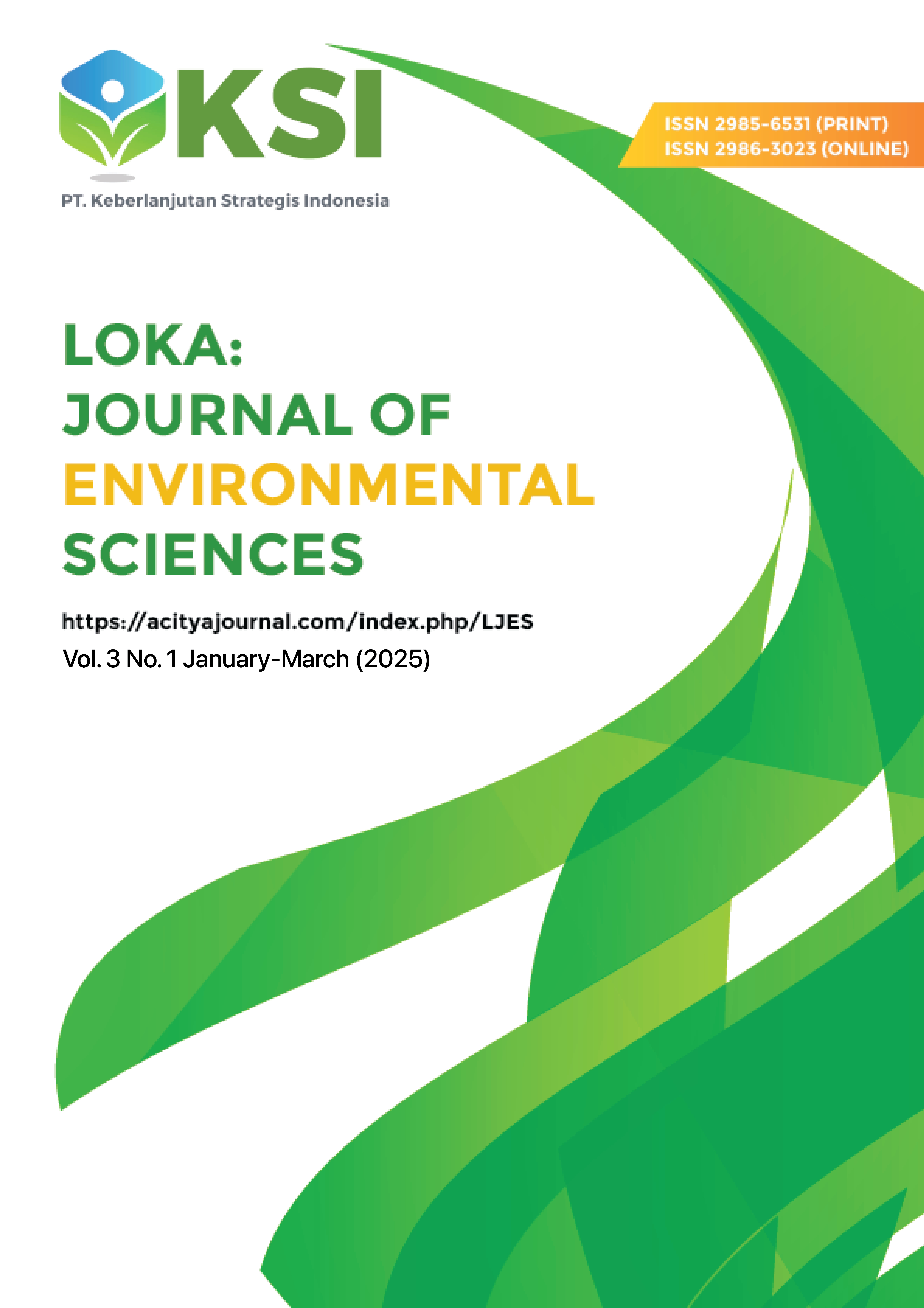Measure’s of the Indian Government in Combating Illegal Wildlife Trafficking: A Green Theory Approach from a Post-Positivist Perspective in International Relations Departments
DOI:
https://doi.org/10.38142/ljes.v2i1.226Keywords:
Illegal Wildlife Trafficking in India, Wildlife Traficking, Indian Ecology PoliciesAbstract
Purpose:
This analysis aims to provide both academic and practical benefits by offering a comprehensive evaluation of India’s policies on combating illegal wildlife trafficking. By integrating sustainability principles and addressing the challenges faced in enforcement and economic growth, the study contributes valuable insights into how the country can enhance its efforts in wildlife conservation. The findings also offer broader implications for strengthening international collaborations, improving law enforcement mechanisms, and reinforcing the role of global environmental norms in shaping national policies. Ultimately, this research seeks to advance both theoretical understanding and practical applications in the field of environmental diplomacy and wildlife protection.
Methodology:
This research employs a qualitative descriptive approach and a case study method to examine India’s legal framework in combating illegal wildlife trafficking.
Findings:
India has adopted a norms-based approach and international cooperation in combating illegal wildlife trade but still faces challenges in implementation due to tensions between economic development and environmental sustainability, weak law enforcement, and the need for greater community involvement in conservation.
Implication:
The implications of these findings indicate that the success of India's policies in combating illegal wildlife trade hinges on balancing economic interests with a firm commitment to environmental sustainability. Moreover, strengthening law enforcement capacity and enhancing public participation is essential to ensuring that the formulated policies can be effectively implemented at both domestic and international levels. For other nations, India's approach can serve as a model for integrating environmental policies into foreign policy, particularly through international cooperation and institutional reinforcement.
Downloads
References
Akash, M. (2022). Deeper and Darker Than You Think: Illicit Wildlife Trade in Bangladesh. The Business Standard. https://www.tbsnews.net/environment/nature/deeper-and-darker-you-think-illicit-wildlife-trade-bangladesh-543702
Alves, R., Rosa, I. L., & Albuquerque, U. P. (2013). Medicine from the Wild: An Overview of the Use and Trade of Animal Products in Traditional Medicines. Springer. https://doi.org/10.1007/978-3-642-29026-8_3
Baaniya, B. (2017). Illicit Wildlife Trade: A Global Review. GRIN. https://www.grin.com/document/412639
Barber-Meyer, S. M. (2010). Dealing with the Illegal Trade in Wildlife. Conservation Biology, 24(4), 862-863. https://doi.org/10.1111/j.1523-1739.2010.01589.x
CITES. (2022). Combating Wildlife Crime Through International Cooperation. Convention on International Trade in Endangered Species of Wild Fauna and Flora. https://cites.org
Dauvergne, P. (2020). Is Artificial Intelligence Greening Global Supply Chains? Global Environmental Politics, 20(1), 92–111. https://doi.org/10.1162/glep_a_00550
Dharma, D. M. A., Bakry, M. I., & Jurana, J. (2022). Making Meaning of Reducing Boarding House Costs during the COVID-19 Pandemic. JIA (Jurnal Ilmiah Akuntansi), 7(2), 166–183. https://doi.org/10.23887/jia.v7i2.41902
Felbab-Brown, V. (2017). The Extinction Market: Wildlife Trafficking and How to Counter it. Hurst Publishers.
Ghosal, S., & Kjosavik, D. J. (2015). Living with Leopards: Negotiating Morality and Modernity in Western India. Society & Natural Resources, 28(10), 1092–1107. https://doi.org/10.1080/08941920.2015.1014603
Green, A. R. (2025). A Critical Environmental Justice Framework for the Illegal Wildlife Trade. Frontiers in Conservation Science, 6, Article 1535093. https://doi.org/10.3389/fcosc.2025.1535093
Haris, A., Samosir, H. E., & Lubis, S. H. (2023). Marketing Communications as Strategy Expanding Market Share in Era 4.0. International Journal of Social Science and Business, 7(1), 188–198. https://doi.org/10.23887/ijssb.v7i1.53535
International Union for Conservation of Nature (IUCN). (2021). Global Strategies for Wildlife Crime Prevention. IUCN Reports. https://www.iucn.org
Kalsi, R. S. (2022). Roadmap for Wildlife Research and Conservation in India. In Advances in Animal Experimentation and Modeling: Understanding Life Phenomena (pp. 297-306). https://doi.org/10.1016/B978-0-323-90583-1.00011-8
Lemieux, A. M., & Clarke, R. V. (2009). The International Ban on Ivory Sales and Its Effects on Elephant Poaching in Africa. British Journal of Criminology, 49(4), 451-471. https://doi.org/10.1093/bjc/azp030
Mozer, A., & Prost, S. (2023). An Introduction to Illegal Wildlife Trade and its Effects on Biodiversity and Society. Forensic Science International: Animals and Environments, 3, 100064. https://doi.org/10.1016/j.fsiae.2023.100064
Rana, A. K. (2023). Current wildlife crime (Indian scenario): Major Challenges and Prevention Approaches. Biodiversity and Conservation, 32, 1105–1125. https://doi.org/10.1007/s10531-023-02520-1
Rosen, G. E., & Smith, K. F. (2010). Summarizing The Evidence on the International Trade in Illegal Wildlife. Biological Conservation, 142(12), 2793-2803. https://doi.org/10.1016/j.biocon.2009.04.019
Shepherd, C. R., & Nijman, V. (2008). The Trade in Bear Parts from Myanmar: An Illustration of the Ineffectiveness of Enforcement of International Wildlife Trade Regulations. Biodiversity and Conservation, 17(1), 35-42. https://doi.org/10.1007/s10531-007-9219-3
Sharma, K., Wright, B., Joseph, T., & Desai, N. (2014). Tiger Poaching and Trafficking in India: Estimating Rates of Occurrence and Detection Over Four Decades. Biological Conservation, 179, 33–39. https://doi.org/10.1016/j.biocon.2014.08.016
TRAFFIC-India. (2020). The Role of International Partnerships in Tackling Illegal Wildlife Trade in India. TRAFFIC Wildlife Trade Monitoring Network. https://www.traffic.org
United Nations Office on Drugs and Crime (UNODC). (2021). Illegal Wildlife Trade and Organized Crime Networks. UNODC Global Wildlife Crime Report. https://www.unodc.org https://doi.org/10.18356/9789210052252
Velho, N., & Laurance, W. F. (2013). Hunting Practices of an Indo-Tibetan Buddhist Tribe in Arunachal Pradesh, North-East India. Oryx, 47(3), 389–392. https://doi.org/10.1017/S0030605312000085
Verma, S. K., & Singh, L. (2003). Novel Universal Primers Establish Identity of an Enormous Number of Animal Species for Forensic Application. Molecular Ecology Notes, 3(1), 28–31. https://doi.org/10.1046/j.1471-8286.2003.00340.x
Wildlife Conservation Society (WCS). (2023). Intelligence-Led Enforcement Against Wildlife Trafficking in India. WCS Reports. https://www.wcs.org
Wildlife Crime Control Bureau (WCCB). (2019). Strengthening Law Enforcement Capacity for Wildlife Crime Prevention. Government of India Report. https://wccb.gov.in
World Wildlife Fund (WWF). (2022). The Transnational Nature of Wildlife Crime and Global Responses. WWF Research Papers. https://www.worldwildlife.org
Wyatt, T. (2013). Wildlife trafficking: A Deconstruction of the Crime, The Victims, and the Offenders. Palgrave Macmillan. https://doi.org/10.1057/9781137269249
Xiong, W., Guo, X., Sun, Y., & Ou, J.-J. (2023). Green Standard and Green Development: Theory and Empirical Evidence. Journal of Cleaner Production, 414, 137768. https://doi.org/10.1016/j.jclepro.2023.137768
Zubaidi, A. K. M. (2024). The Peruvian Government’s Strategy Against Wildlife Trafficking: From Intelligence Operations to Strict Law Enforcement. Loka: Journal of Environmental Sciences, 1(4), 146-155. https://doi.org/10.38142/ljes.v1i4.209
Downloads
Published
Issue
Section
License
Copyright (c) 2025 Nada AQILA, Abdul Khakim Mahfud ZUBAIDI

This work is licensed under a Creative Commons Attribution-NonCommercial 4.0 International License.
Creative Commons Attribution-NonCommercial 4.0 International License.

















